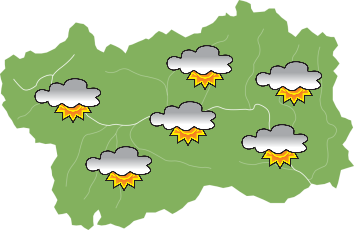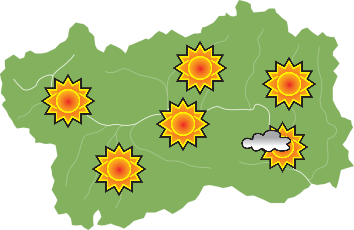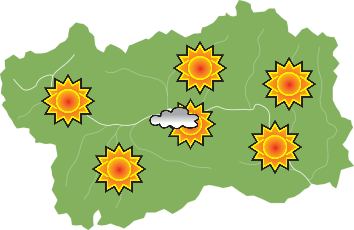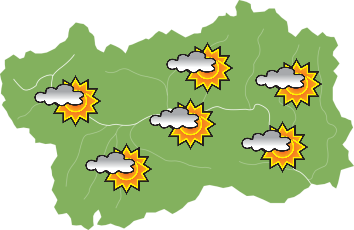Rural architecture and ethnography in the lower valley of the Matterhorn
Lokalität: Antey-Saint-André, Chamois, Ла Магдлен, Torgnon
For the opening time and tips on how to visit the places indicated, please consult the corresponding links
How: by car, on foor or by cable car.
Recommended duration: two days.
Recommended period: all year round.
Length: about 20 km.
A ‘journey’ to discover the ancient hamlets that retain characteristic alpine architecture, of the mills of La Magdeleine, of the ethnographic museum of Torgnon and of the village of Chamois that can only be reached via cable car or a pleasant walk from La Magdeleine.
The route starts from Antey-Saint-André, the first inhabited centre of the valley from which you can enjoy a stunning view of the Matterhorn.
From spring through to autumn, from the hamlet of Grand Moulin, the remains of the medieval aqueduct are visible (14th century) with its majestic arches against the mountain. Today these impressive works are referred to as ‘rus morts’ (dead canals) or ‘rus du pan perdu’ (lost canals) due to their age. The starting point is piazzale A. Rolando next to the tourist office, following hiking trail no. 105, the altitude gap is of 175 metres and it lasts about 30 minutes.
At Antey you can also visit the small ethnographic museum located on the ground floor of the ‘Engaz’ House, the ancient seat of the Magistrature of Valtournenche which now houses the communal library.
From Antey-Saint-André 2 roads begin that take one to Torgnon to the right and La Magdeleine to the left of the stream, respectively.
Torgnon is a municipality made up of 22 small hamlets spread over a large and sun drenched morainic terrace, from which you can enjoy a splendid view over the valley and the surrounding mountains. You should visit the Petit-Monde ethnographic museum, located in the hamlet of Triatel. The site, architecture and history make the Musée Petit-Monde a cultural asset of great interest for the whole Aosta Valley community: a terraced raccard (old wooden house), the only example in the Valley, a grandze (barn where wheat was threshed and typical products of the farming tradition were prepared) and a grenier (storage loft), built between 1462 and 1700, restored and valorised by an extremely original set-up, are now examples of a past that is in danger of being forgotten. Visiting the collections in the numerous tsé and tzambron (indoor rooms), you can immerse yourself in the life of local residents - a hard life marked by the slow pace of work in the fields. The itinerary is completed with a visit to the mill, which is located nearby on the Petit Monde river.
To make the most of the place, museum site and the nature that surrounds it, we recommend that you walk to the museum and admire the spendid panorama over Torgnon, Valtournenche and the Matterhorn. It is a beautiful walk that is accessible to all. The museum can also be reached by car, by taking the same narrow and paved road which is used by many pedestrians (about 1.8 km).
Also of note is the parish church whose oldest historical traces date back to 1413, however the current construction of neo-Gothic style dates back to 1868. On the right side stands the Romanesque bell tower built in 1773, with access via a lowered archway and a two-story belfry with an arched mullioned window. There is a sundial on the south side.
In the central nave of the church you can admire the great triumphal crucifix dating back to the sixteenth century, which is certainly one of the most impressive works that can be seen in the region: it is very dramatic and seems to be of the German school, because the scuplture reflects the results of the expression sought by the greatest German painters of the early sixteenth century.
La Magdeleine is a tranquil holiday resort made up of five small villages situated within walking distance of each other. An interesting attraction is the characteristic Path of the mills which links up eight recently renovated mills all located along the same river. These old mills (some of which are functional and outfitted with objects and old photographs) were used to grind cereals (barley, oats, wheat and rye) that used to grow lush on the sun drenched slopes of this small village. A little further on is the hamlet of Buisson from which the cable car that connects the valley with Chamois (1815 m.) leaves. Chamois is a traditional village with wooden houses, it is the only municipality in Italy that cannot be reached by car, but only by a modern cable car or on foot by walking along the path that connects it to the municipality of La Magdeleine, a route that is suitable for all of about 11 km (round trip).










